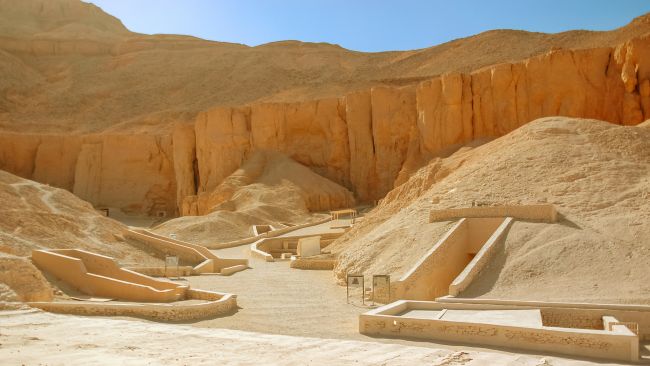The kings of the eighteenth, nineteenth, and twentieth dynasties of the New Kingdom (about 1550 – 1069 BC) were buried in a dry river valley on the west bank of the ancient city of Thebes (modern Luxor), hence its name Valley of the Kings, but this name is not Quite accurate since some members of the royal family other than kings were buried there, as well as some non-royal, albeit high-ranking individuals. The Valley of the Kings is divided into the eastern and western valleys. The eastern part is the most famous between them, where the western valley contains a few tombs, and the Valley of the Kings in total contains more than sixty tombs in addition to twenty unfinished tombs that are no more than pits.
This site for the burial of kings was carefully chosen; It is located on the western bank of the Nile, because the sun god descends (dies) on the western horizon in order to be reborn, and rejuvenate on the eastern horizon, and for this reason the West was associated with funerary concepts and ancient Egyptian tombs were generally located on the western bank of the Nile for this reason
The secluded nature of this valley was another reason for choosing it as the last resting place for kings. Tombs were stolen in antiquity, and to avoid that fate, as happened to the pyramids of the Old and Middle Kingdom, they chose hidden underground tombs in a secluded desert valley. The first ruler of the modern state whose burial in the Valley of the Kings was confirmed was Tuthmosis I (circa 1504-1492 BC), the third king of the Eighteenth Dynasty. According to Eni, the chief digger of his tomb: “I supervised the excavation of his [king] tomb in privacy, no one sees And nobody hears.”

